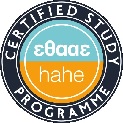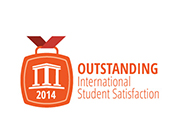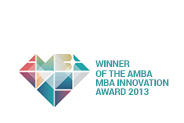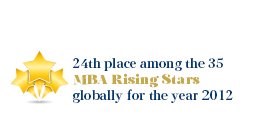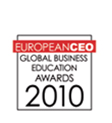 Two recent surveys conducted jointly by kariera.gr and the Athens University of Economics and Business (AUEB), under my scientific supervision, shed light on the evolving dynamics of the Greek labor market. By combining the voices of employees and job seekers with the perspectives of HR leaders and employers, the findings offer a comprehensive picture of both opportunities and challenges in talent attraction, retention, and engagement.
Two recent surveys conducted jointly by kariera.gr and the Athens University of Economics and Business (AUEB), under my scientific supervision, shed light on the evolving dynamics of the Greek labor market. By combining the voices of employees and job seekers with the perspectives of HR leaders and employers, the findings offer a comprehensive picture of both opportunities and challenges in talent attraction, retention, and engagement.
Employees on the Move
Nearly half of employees (47%) report being in active job search mode, a striking indicator of mobility and dissatisfaction. Only one in five declare no interest in changing roles. This mobility is not evenly distributed: women and younger generations (Gen Z and Millennials) are considerably more likely to explore new opportunities, while older cohorts demonstrate greater stability. Education also matters—degree holders and postgraduates display higher levels of job search activity, reflecting ambition for growth and structured career paths.
Most job seekers focus on entry- and mid-level roles, with office positions, HR, and sales dominating interest. Digital platforms are the primary search channels, with LinkedIn, corporate career sites, and job boards leading the way. Yet, despite this digital dominance, candidates rate more personalized approaches—such as headhunting, internships, and employee referrals—as more effective.
When evaluating potential employers, candidates actively seek information through company websites, search engines, and LinkedIn. Yet they often encounter gaps: vague job descriptions, limited communication post-interview, and scarce feedback. Indeed, half of applicants never receive evaluation feedback, and nearly three in four are never asked to provide their own. This lack of transparency undermines candidate experience, leaving individuals feeling undervalued.
Candidates show clear preferences for selection methods involving direct interaction, particularly competency-based and CV-based interviews, which they view as fair and reliable. Case studies and assessment centers also score highly, while online tests and automated processes fare poorly. The underlying message is unambiguous: candidates seek dialogue and human connection, not faceless systems.
Push and Pull Factors
The decision to leave or stay remains anchored in both financial and qualitative drivers. Better salary offers (66%) remain the top reason for resignations, but stress and pressure (56%), poor managerial relationships (55%), lack of recognition (48%), and work-life imbalance (43%) follow closely. Retention, meanwhile, is supported by competitive pay (60%), work-life balance (59%), job security (56%), financial stability (41%), and career advancement (38%).
Notably, employees value intangible dimensions of work. Respect, meritocracy, supportive colleagues, and good communication with leadership consistently emerge as key satisfaction factors. These elements, though harder to measure, strongly influence engagement and loyalty.
The Employer Perspective
Employers, for their part, face the same shifting realities. The 2023 HR practices survey reveals that companies are focusing heavily on attraction, selection, and retention of talent, while also adapting to post-pandemic demands for flexibility. Flexible working arrangements are no longer a novelty but a fixture. Large firms emphasize financial stability and pay, medium-sized organizations focus on work-life balance and meaningful challenges, while small firms offer development opportunities and cultural flexibility.
Recruitment strategies show a convergence around digital tools: professional social networks (primarily LinkedIn) and job boards dominate as both the most common and most effective sourcing channels. Referrals also remain critical, demonstrating the enduring power of networks. University partnerships—career fairs and internships—continue to play a role, particularly in building pipelines for younger talent.
Yet employers also struggle with the length and efficiency of hiring processes. The share of roles filled within one month has decreased, while positions requiring more than three months to fill are on the rise. At the same time, turnover patterns vary across functions, with production and finance seeing the highest rates of departure.
A central finding is the growing weight of soft skills. Companies increasingly emphasize interpersonal and non-technical competencies in selection processes, reflecting the need for adaptability and collaboration in today’s volatile environment. Applicant tracking systems and video interviews are now standard, but they do not replace the need for human judgment.
Technology and the Role of AI
Both employees and employers increasingly operate in a digitally mediated labor market. On the candidate side, digital platforms dominate job search behavior, with LinkedIn, career sites, and job boards serving as the first point of contact. Yet despite this reliance, candidates remain skeptical of fully automated processes. Online tests and algorithm-driven applications are consistently rated lower in fairness and transparency compared to interviews and case studies. The message is clear: technology may enhance efficiency, but it cannot replace human dialogue and trust.
On the employer side, there is a growing exploration of AI-powered tools for talent attraction and selection. Recruitment teams experiment with big data analytics, applicant tracking systems, and automated screening to manage high application volumes. Social networks remain the most effective sourcing channels, but AI-driven matching is gaining attention as a way to identify suitable profiles faster and build talent pools.
Still, a gap persists. Many organizations adopt digital tools but do not systematically evaluate their impact on candidate experience or diversity outcomes. Without careful design, AI may risk amplifying bias or depersonalizing the process—precisely the issues that candidates highlight as weaknesses today.
For HR leaders, the challenge lies in balancing technology with humanity: using AI to streamline processes and provide data-driven insights, while maintaining transparency, feedback, and genuine interaction. In this sense, AI is not a substitute for human judgment but a complement that can help organizations scale fairness and efficiency if used responsibly.
Convergence and Contradictions
Viewed together, the two studies highlight both convergence and contradictions. Employees consistently seek respect, balance, recognition, and clear growth opportunities, while employers emphasize flexibility, pay, and branding. Both sides recognize that compensation is essential but not sufficient. Still, a disconnect remains in the way information is shared, feedback is given, and EVP is communicated.
Candidates want transparency, dialogue, and human connection; employers increasingly adopt digital systems but risk depersonalizing the process. Employees prioritize intangible cultural factors; companies focus on structural incentives without always addressing leadership behaviors and workplace relationships.
Strategic Implications
For HR leaders, several imperatives emerge:
- Redesign the EVP: Move beyond salary-driven narratives to integrate respect, recognition, career development, and balance as central promises.
- Humanize the process: Even in a digital era, feedback, clear communication, and interactive assessments are vital for a positive candidate experience.
- Invest in leadership: Relationships with supervisors remain a key driver of exits. Developing managers’ ability to support, recognize, and engage is essential.
- Balance speed with quality: Lengthening hiring timelines risk talent loss. Streamlined but candidate-centered processes are needed.
- Measure branding impact: Employer branding must be tied to clear metrics and communicated internally as well as externally.
- Use AI responsibly: AI should augment—not replace—human judgment, ensuring efficiency without sacrificing fairness and candidate trust.
Conclusion
The Greek labor market is at a crossroads. Employees are more mobile, educated, and demanding than ever, while employers strive to adapt to shifting expectations and tighter competition. Both sides agree that work is about more than pay; culture, respect, and growth matter deeply. Bridging the gap between what employees seek and what employers offer will define not just talent strategies but the long-term resilience of organizations in Greece.
Further reading (in Greek): https://employers.kariera.gr/reports-ereunes-agoras-ergasias/ereuna-ypopshfion-kai-ergazomenon







